The (Natural) World, According to Our Photo Contest Finalists
From a caterpillar to the Milky Way, the ten finalists in the contest’s Natural World category capture the peculiar, the remarkable and the sublime
![]()

The Milky Way Galaxy Exploding from Mount Rainier. Photo by David Morrow (Everett, Washington). Photographed at Sunrise Point in Mount Rainier National Park, Washington, October 6, 2012.
David Morrow, a 27-year-old aerospace engineer by day and budding photographer by night, was perched at Sunrise Point on the evening of October 6, 2012. From the popular viewing spot in Mount Rainier National Park, he had a clear view of Rainier, the 14,411-foot beastly stratovolcano to his west. As he recalls, at about 9 p.m. the sun had set and the stars began to appear. Filling the viewfinder of his Nikon D800, quite brilliantly, was the Milky Way.
“It is not often that you see the Milky Way line up so perfectly with an earthly object,” said Morrow, when his resulting photograph (shown above) was selected as a finalist in Smithsonian.com’s 2012 photo contest. “The stars almost looked as though they were erupting from the mountain and I knew this was a moment in time that I had to capture.”
For a decade now, Smithsonian magazine’s annual photo contest has been a loving ode to these moments. Each year, photographers from around the world submit entries in five categories near and dear to us: the Natural World, Travel, People, Americana and Altered Images. Our photo editors, who have reviewed more than 290,000 photographs from upwards of 90 countries in the contest’s history, then select 10 finalists in each category.
This week, Smithsonian.com announced the finalists for the 2012 photo contest. At this point, the public is invited to vote on a readers’ choice winner, and, ultimately, our editors will select category winners and a grand prize winner, to be revealed later this spring. We here at Collage of Arts and Sciences have a special affinity for the Natural World images, which beautifully capture animals, plants and landscapes; geological or climatological features; and scientific processes and endeavors.
So what makes a finalist stand out from other entries?
“Quite simply, I look for something that I have not seen before,” says Maria G. Keehan, Smithsonian magazine’s art director. For the Natural World submissions, she and her colleagues sifted through a fair share of photographs of pets, rainbows, mating insects and horses in misty light (“Misty anything has kind of taken its toll on me,” says Keehan) to parse out images that accomplish something truly unique—like capturing an unusual or rare animal behavior. “Of course good technique and composition are always part of the judging structure, but originality is what strikes me. I really look for things that make you gasp or question,” she adds. “Not just, ‘Oooo, beautiful bird,’ but ‘Wow. Look at the perspective on that. They shot the image through the bird’s wings!”
To make the cut, a photograph has to evoke a visceral reaction. Future contestants, take note. Keehan’s advice is this: “Trust your (natural!) instincts about what is peculiar, remarkable or sublime.”
Without further ado, here are the remainder of the 10th annual photo contest’s Natural World finalists:
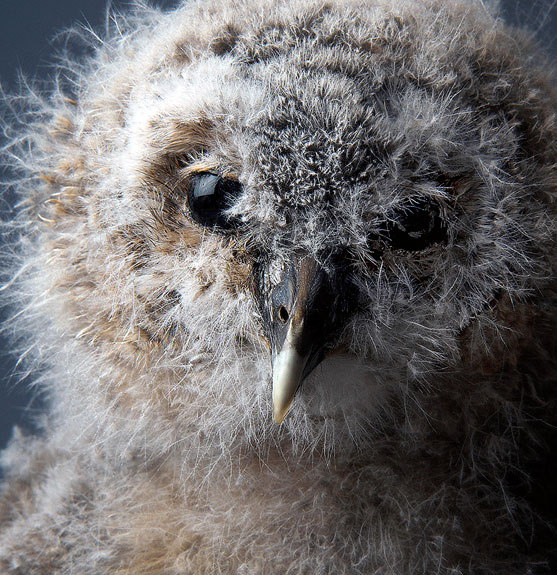
Baby Owl in Studio. Photo by Phillip Pilkington (Southport, UK). Photographed in Southport, UK, November 2012.
Phillip Pilkington snapped a portrait of a fluffy, four-week-old Tawny owl (above) at a bird enthusiast’s home in Southport, UK. “I was aiming to do a traditional studio portrait of an unusual studio subject,” he says. The owl was still, and so it made for an ideal sitter, the photographer recalls. “I just concentrated on the photography,” Pilkington adds. “I wanted to do a close-up shot, at the same time I didn’t want to get too close, and that is why I chose to crop the image.”
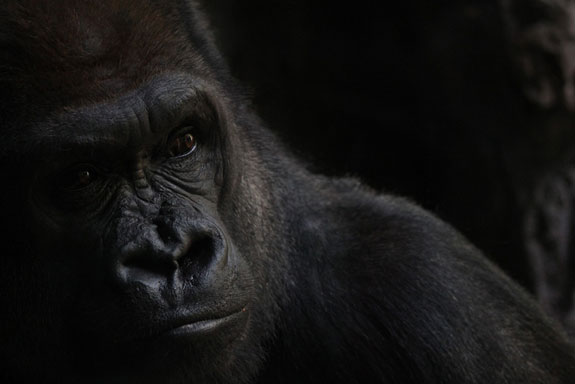
Visiting the Bronx Zoo. Photo by Vanessa Bartlett (New York, New York). October 2012, Bronx Zoo, New York City.
When Vanessa Bartlett took up photography last year, she needed, in her words, a “subject that wouldn’t shatter my fragile photography ego.” So, she went to the Bronx Zoo. On an October day, she photographed baboons, giraffes and lions, but it was a gorilla that stole her attention. “They’re majestic,” says Bartlett, of the primates. “But the expression he gave was what made me take the photo.”
Bartlett sat with the gorilla for about 30 minutes, just a pane of glass separating them. “Just as a photographer likes a look a model gives in the middle of a shoot, I saw a look I loved from the gorilla,” she says. “What I caught was a personal, private moment. That’s what’s so captivating.”
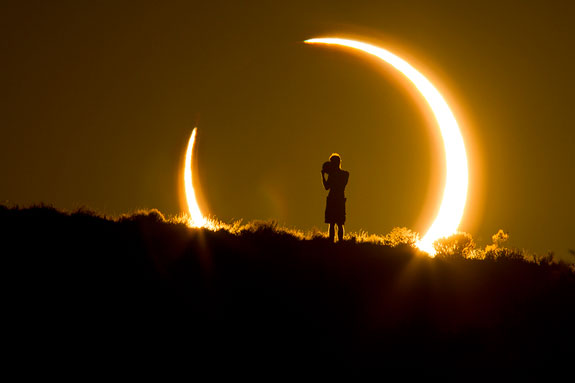
An Onlooker Witnesses the Annular Solar Eclipse as the Sun Sets on May 20, 2012. Photo by Colleen Pinski (Peyton, CO). Photographed in Albuquerque, NM, May 2012.
On May 20, 2012, Americans, especially on the west coast, were privy to an annular solar eclipse—where the moon blocks all but the outer ring of the sun. “My husband and I heard about the eclipse a few days before it happened,” says Colleen Pinski, who captured the image, above. “So, I was compelled to take some photos of it…I couldn’t miss the ‘once in a lifetime’ opportunity to shoot it.”
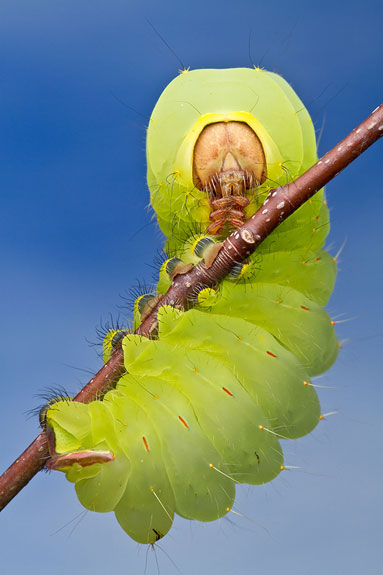
Antheraea Polyphemus Caterpillar Striking a Rather Devious-Looking Pose. Photo by Colin Hutton (Durham, North Carolina). Photographed in Duke Forest, North Carolina, September 2011.
Colin Hutton was in the Duke Forest, a 7,060-acre tract of land in North Carolina used for research, when he took this remarkable close-up of a caterpillar of a North American moth (Antheraea polyphemus). He was actually searching for jumping spiders, but this little guy was a welcome diversion. “I really like the glowing quality of the caterpillar’s skin and the devious look of its defensive posture,” says Hutton. “It reminds me of the character Mr. Burns from The Simpsons as he says ‘Excellent…’ while tapping his fingers together.”
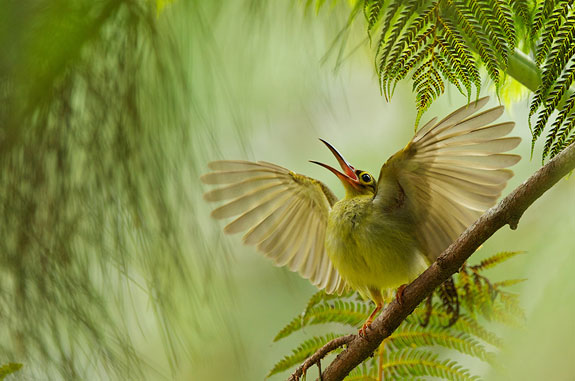
Mummy, I Am Down Here, and Hungry! Photo by Bjorn Olesen (Singapore). Photographed in Sarawak, Borneo, Malaysia, November, 2010.
Bjorn Olesen was on a week-long trip to Sarawak, Borneo, in November 2010, when he photographed this juvenile Spectacled Spiderhunter (Arachnothera flavigaster) calling out to its parents. “In my view the photo demonstrates the great strength of still photography: to freeze those magic moments that may have otherwise been unnoticed,” says Olesen. “The soft light, the inspiring pose, the color of the bird goes very well together with the beautiful palette of greens of the ferns.”
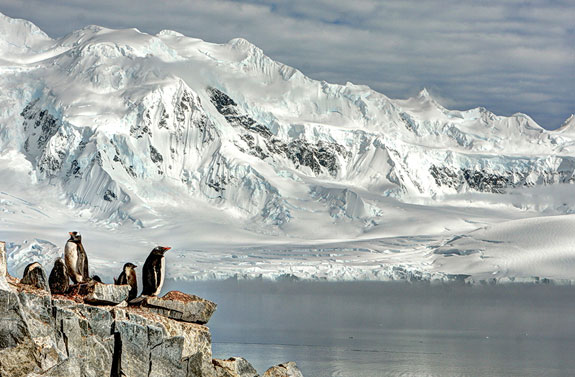
Breeding Penguins. Photo by Neal Piper (Washington, DC). Photographed at Damoy Point, Antarctica, January 2012.
Neal Piper spent 12 days in Antarctica in February 2012. “I have always been fascinated with penguins and dreamed of visiting Antarctica to see them in their natural habitat,” he says. To get to Damoy Point, where he took this photograph, Piper traveled three days by ship through the Drake Passage and then took a short jaunt on a small motorized raft to his campsite, where he would study a breeding colony of Gentoo penguins.
“Although it was a bitter cold evening, I woke up to a beautiful sunrise. The snow was glimmering upon the majestic mountains,” says Piper. ”I looked over at the colony of Gentoo penguins and saw a few of them overlooking the cliff, almost as if they were enjoying the view. I grabbed my camera and watched them for about an hour until one of the adults and newborn chicks looked into the horizon. I knew right then I had the shot. After taking the photo I looked down at the viewfinder and instantly smiled.”
According to Piper, Gentoo penguins have funny personalities. “After studying them for a week, I discovered that they are very loving and protective to their newborn chicks. To build their nests, they pick up rocks with their beaks, usually stolen from another penguin nest, and place them on their nest. Once the perpetrator places the rock on its nest, the victim often reclaims it and places it back on its own nest. It was a very entertaining scene,” he says.

A Man-Made Ice Geyser. Photo by Nathan Carlsen (Duluth, Minnesota). Photographed in Duluth, Minnesota, January 2012.
“A water pipe in Duluth is ‘bled’ every year to ensure it doesn’t freeze,” says Nathan Carlsen, the photographer who captured the finalist, above. “As the water freezes, it builds this amazing ice geyser.” As an experiment, the Minnesotan dangled a rope of LED lights down the geyser. “I knew it would light up well as it is perfectly clear ice, but I had know idea how beautiful it would be. Every year the formation looks a bit different and I go out to it to take a few more . But this one, the first one, still proves to be my best shot so far.”
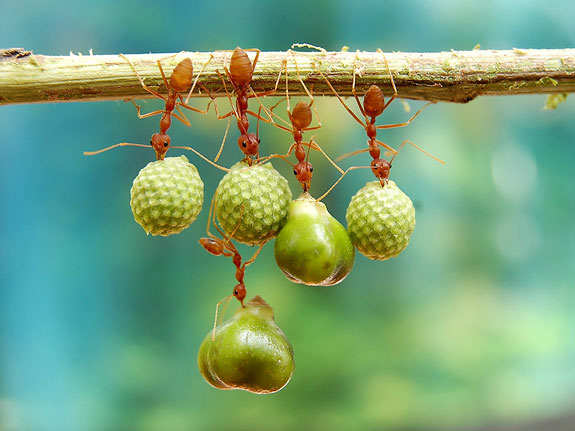
Ants Holding Seeds. Photo by Eko Adiyanto (Bekasi, Indonesia). Photographed in Bekasi, West Java, Indonesia, April 2012.
Eko Adiyanto stumbled across this scene of ants fiercely gripping seeds in Bekasi, West Java, Indonesia, last April. He felt compelled to take the photograph, above, because it seemed like a super-ant feat of strength. “They are small but very powerful,” says Adiyanto.
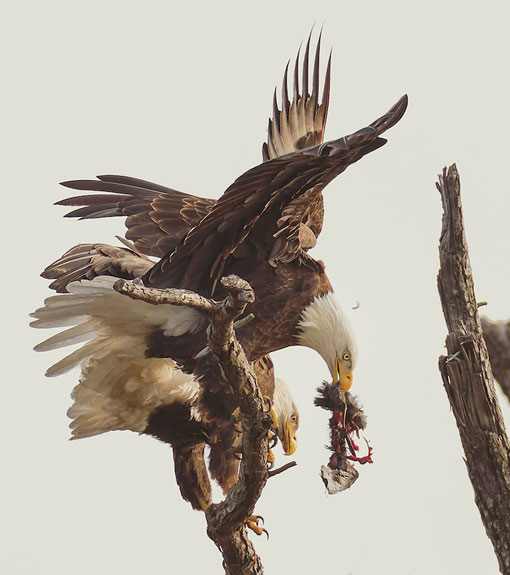
A Pair of Bald Eagles Share a Meal. Photo by Don Holland (Dyer, Tennessee). Photographed in Reelfoot Lake State Park, Tennessee, January 2012.
Don Holland enjoys photographing birds in flight, particularly great egrets and bald eagles. He was driving a stretch of road in Reelfoot Lake State Park in northwest Tennessee when his wife spotted a pair of bald eagles in a dead tree nearby. “I stopped the car immediately and began photographing the eagle pair eating what appeared to be the remains of a coot. Since most of the food was gone, I realized I didn’t have time to mount the lens on the tripod to capture the action. I handheld the camera and lens for the sequence of photos I took in the short time before the eagles flew,” recalls Holland. “The sky was bright-cloudy, and the sun was beginning to peek through the clouds at 20-30 degrees over my right shoulder. With evenly dispersed and adequate light, I worked quickly to take advantage of the special opportunity of capturing the behavior of the eagle pair in an uncluttered background.”
See the finalists in the other four categories, and vote for the 10th Annual Photo Contest Readers’ Choice Award by 2PM EST on March 29.
/https://tf-cmsv2-smithsonianmag-media.s3.amazonaws.com/accounts/headshot/megan.png)
/https://tf-cmsv2-smithsonianmag-media.s3.amazonaws.com/accounts/headshot/megan.png)